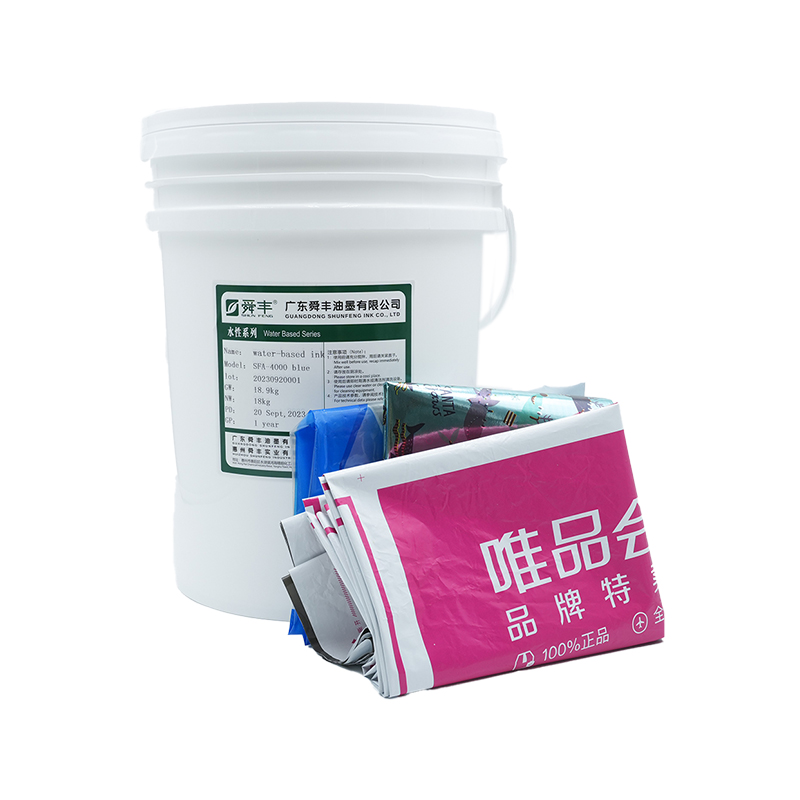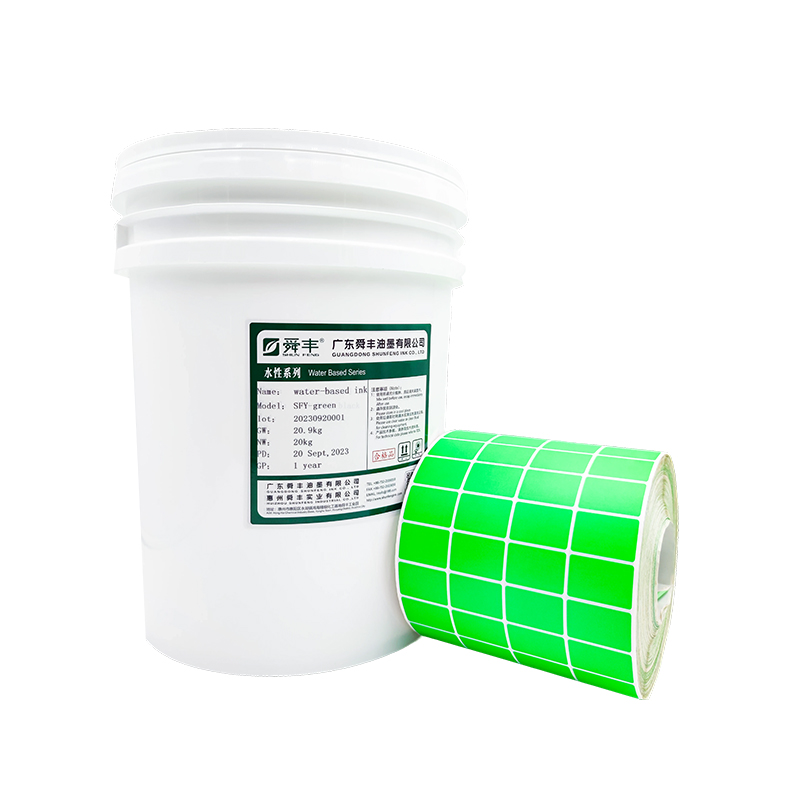What breakthroughs does flexo UV ink for paper offer in terms of printing efficiency and environmental performance?
Release Time : 2025-10-23
Flexographic printing, a mainstream technology in the packaging printing industry, is widely used for printing on materials such as paper, cardboard, and plastic film. As market demands for print quality, production efficiency, and environmental protection continue to rise, traditional water-based or solvent-based inks have gradually become limited in terms of drying speed, VOC emissions, and printability. The emergence of flexo UV ink for paper, with its unique curing mechanism and material properties, has achieved revolutionary breakthroughs in printing efficiency and environmental performance, becoming a key driver of modern green printing.
1. Efficient Curing: Enabling High-Speed Printing and Instant Converting
One of the most significant advantages of flexo UV ink for paper is its "instant cure" capability. UV inks eliminate the need for traditional hot air drying after printing. Instead, they use ultraviolet light of a specific wavelength to activate the photoinitiator in the ink, causing monomers and oligomers to rapidly polymerize, transforming from liquid to solid within seconds. This feature significantly improves printing efficiency, enabling press speeds to reach over 300 meters per minute, far exceeding the drying limits of traditional water-based inks. Furthermore, UV inks dry immediately after curing, eliminating smearing and sticking caused by wet ink. Printed products can then proceed directly to post-processing steps like die-cutting, laminating, and hot stamping, achieving an integrated "printing-processing" production line, significantly shortening lead times and improving overall production efficiency.
2. Zero Volatile Emissions: Significantly Reduces VOC Pollution
In terms of environmental performance, flexographic UV inks represent a significant breakthrough in controlling pollution at the source. Traditional solvent-based inks release large amounts of volatile organic compounds during the drying process, which not only pollutes the air but also poses flammability and explosion risks, requiring complex exhaust gas treatment systems. While water-based inks have lower VOC levels, they still contain a certain proportion of alcohol additives, resulting in high energy consumption during the drying process. UV inks, on the other hand, contain virtually no volatile solvents. Their primary components are reactive monomers, oligomers, photoinitiators, and pigments. The curing process is a 100% chemical cross-linking reaction, eliminating solvent volatilization and resulting in near-zero VOC emissions.
3. High Print Quality and Material Compatibility
Flexographic UV inks are not only highly efficient and environmentally friendly, but also offer exceptional print quality. Their high solids content and low surface tension ensure excellent wetting on paper surfaces, resulting in crisp dot reproduction, high color saturation, and superior gloss. They are particularly suitable for high-definition graphics, gradients, and large-scale solid printing. UV inks also exhibit excellent adhesion to a variety of paper substrates, including recycled, coated, and uncoated paper, and are less susceptible to deformation and overprinting due to water absorption. Furthermore, the cured ink film is tough and wear-resistant, offering excellent scratch, chemical, and water resistance, making it suitable for high-performance printed products such as food packaging, labels, and high-end catalogs.
4. Energy Saving and Resource Conservation
The energy consumption of UV ink curing is significantly lower than that of traditional hot air drying systems. While traditional water-based inks require significant amounts of heat to evaporate water, UV curing requires only a short period of ultraviolet light exposure, resulting in lower energy consumption and a smaller equipment footprint. Combined with LED-UV light source technology, energy consumption can be further reduced by over 70%, minimizing carbon emissions. Furthermore, since no solvent recovery system or large drying oven is required, the printing equipment is more compact and maintenance costs are lower, achieving both energy and resource savings.
Flexo UV ink for paper improves printing efficiency through instant curing and achieves green production with zero VOC emissions, achieving significant breakthroughs in both efficiency and environmental protection. It not only meets the modern printing industry's comprehensive demands for high speed, high quality, and low pollution, but also drives the entire packaging and printing industry towards intelligent and sustainable development.
1. Efficient Curing: Enabling High-Speed Printing and Instant Converting
One of the most significant advantages of flexo UV ink for paper is its "instant cure" capability. UV inks eliminate the need for traditional hot air drying after printing. Instead, they use ultraviolet light of a specific wavelength to activate the photoinitiator in the ink, causing monomers and oligomers to rapidly polymerize, transforming from liquid to solid within seconds. This feature significantly improves printing efficiency, enabling press speeds to reach over 300 meters per minute, far exceeding the drying limits of traditional water-based inks. Furthermore, UV inks dry immediately after curing, eliminating smearing and sticking caused by wet ink. Printed products can then proceed directly to post-processing steps like die-cutting, laminating, and hot stamping, achieving an integrated "printing-processing" production line, significantly shortening lead times and improving overall production efficiency.
2. Zero Volatile Emissions: Significantly Reduces VOC Pollution
In terms of environmental performance, flexographic UV inks represent a significant breakthrough in controlling pollution at the source. Traditional solvent-based inks release large amounts of volatile organic compounds during the drying process, which not only pollutes the air but also poses flammability and explosion risks, requiring complex exhaust gas treatment systems. While water-based inks have lower VOC levels, they still contain a certain proportion of alcohol additives, resulting in high energy consumption during the drying process. UV inks, on the other hand, contain virtually no volatile solvents. Their primary components are reactive monomers, oligomers, photoinitiators, and pigments. The curing process is a 100% chemical cross-linking reaction, eliminating solvent volatilization and resulting in near-zero VOC emissions.
3. High Print Quality and Material Compatibility
Flexographic UV inks are not only highly efficient and environmentally friendly, but also offer exceptional print quality. Their high solids content and low surface tension ensure excellent wetting on paper surfaces, resulting in crisp dot reproduction, high color saturation, and superior gloss. They are particularly suitable for high-definition graphics, gradients, and large-scale solid printing. UV inks also exhibit excellent adhesion to a variety of paper substrates, including recycled, coated, and uncoated paper, and are less susceptible to deformation and overprinting due to water absorption. Furthermore, the cured ink film is tough and wear-resistant, offering excellent scratch, chemical, and water resistance, making it suitable for high-performance printed products such as food packaging, labels, and high-end catalogs.
4. Energy Saving and Resource Conservation
The energy consumption of UV ink curing is significantly lower than that of traditional hot air drying systems. While traditional water-based inks require significant amounts of heat to evaporate water, UV curing requires only a short period of ultraviolet light exposure, resulting in lower energy consumption and a smaller equipment footprint. Combined with LED-UV light source technology, energy consumption can be further reduced by over 70%, minimizing carbon emissions. Furthermore, since no solvent recovery system or large drying oven is required, the printing equipment is more compact and maintenance costs are lower, achieving both energy and resource savings.
Flexo UV ink for paper improves printing efficiency through instant curing and achieves green production with zero VOC emissions, achieving significant breakthroughs in both efficiency and environmental protection. It not only meets the modern printing industry's comprehensive demands for high speed, high quality, and low pollution, but also drives the entire packaging and printing industry towards intelligent and sustainable development.







